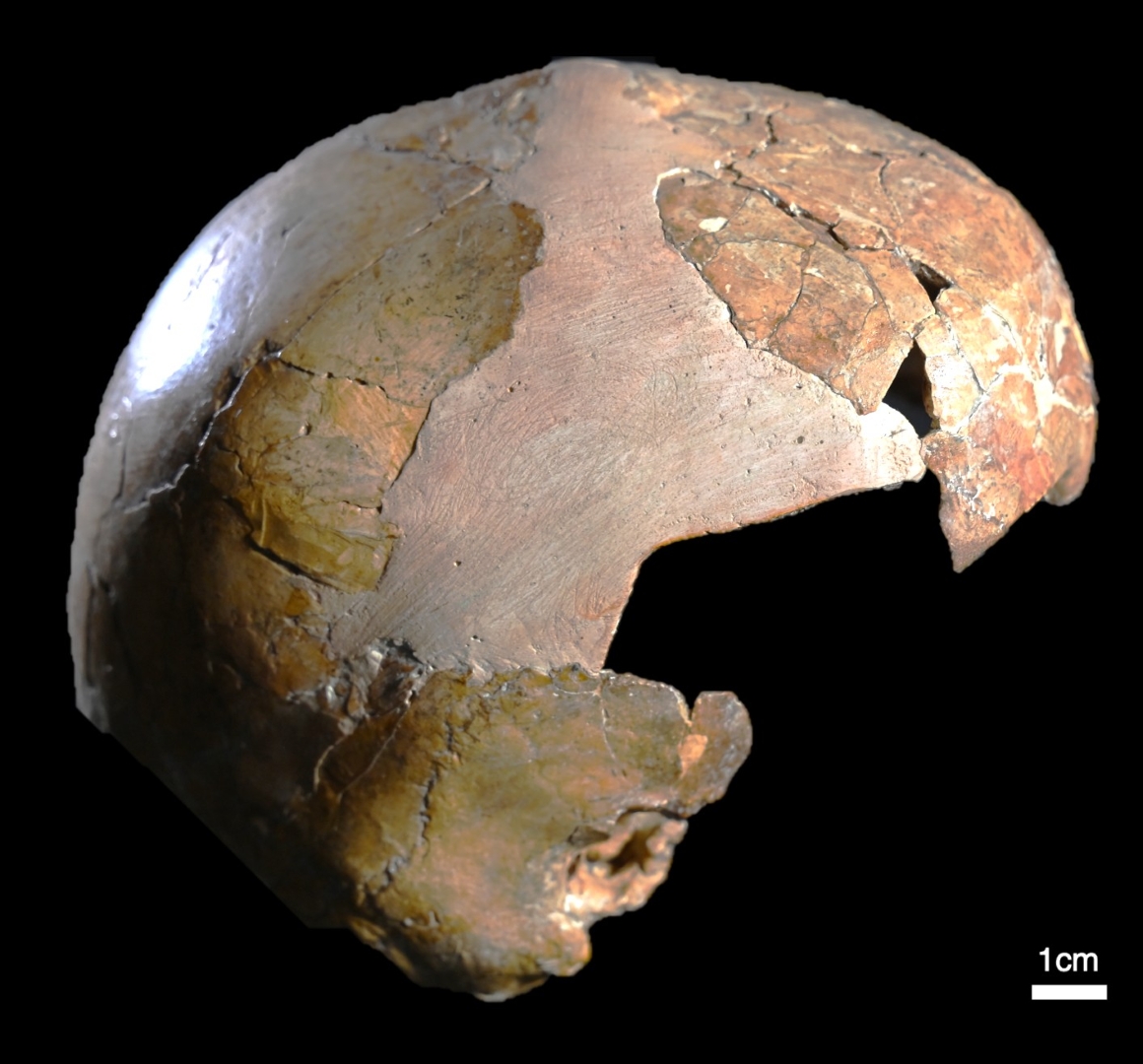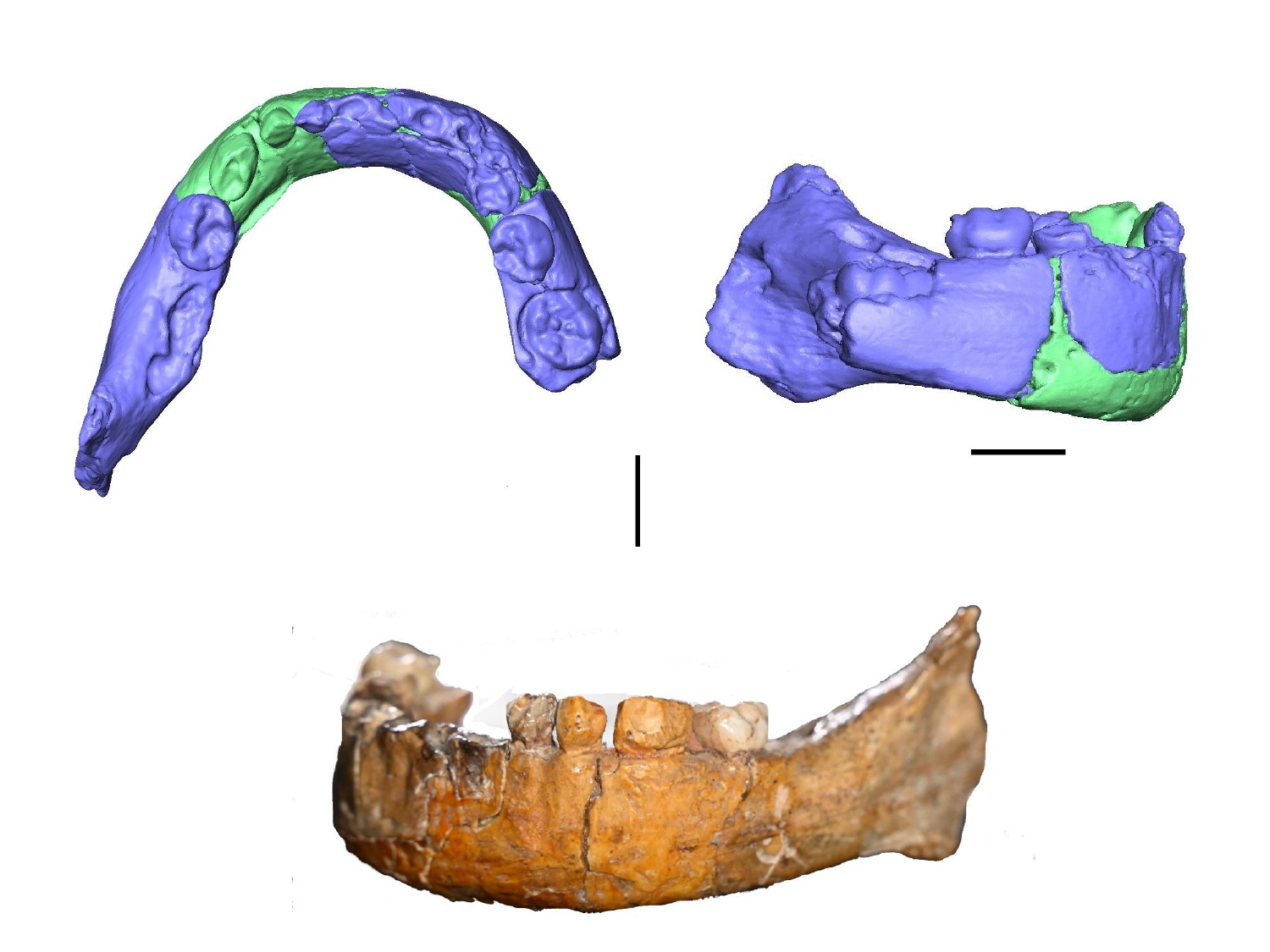140,000-year-old child's skull may have been part modern human, part Neanderthal — but not everyone is convinced
A child buried in the world's oldest human cemetery had both modern human (Homo sapiens) and Neanderthal characteristics, suggesting she was a hybrid, according to a new study. However, not everyone is convinced the study's findings are definitive.

One of the earliest known human burials — that of a young child — could have been a cross between modern humans and Neanderthals, a new study suggests.
Researchers analyzed a skull that was found at a 140,000-year-old burial site and concluded that the child it belonged to had both modern human (Homo sapiens) and Neanderthal characteristics. However, the child's precise ancestry is still uncertain.
The skull was part of a cache of mysterious human remains unearthed almost 100 years ago in Skhul Cave, located on Mount Carmel in Israel. These fossils have been the subject of much scientific debate since their discovery, but were largely considered to be anatomically modern humans.
Skhul Cave is the earliest of all known organized human burial sites, so the identity of the remains buried there is significant. The authors of the study, published in the July-August issue of the journal L'Anthropologie, argued that based on their analysis, the remains can no longer be attributed exclusively to Homo sapiens.
The researchers used CT scanning techniques to get a new and detailed look at the child's skull (Skhul I), which consists of a broken braincase (neurocranium) and jaw (mandible). On further study, the braincase mostly exhibited modern features typical of Homo sapiens, but the jaw was more like a Neanderthal's, according to the study.
Study co-author Anne Dambricourt Malassé, a paleoanthropologist at the National Center for Scientific Research (CNRS) and National Museum of Natural History in France, told Live Science in an email that there was "no way" this morphology represents variability of Homo sapiens and the child was "objectively" a hybrid.
However, not everyone thinks the findings are so definitive. Chris Stringer, a paleoanthropologist at the Natural History Museum in London who was not involved in the study, told Live Science that while the mandible looked primitive, when considering all of the fossils together, he thought they primarily aligned with Homo sapiens. But Stringer did note that the study's conclusions were consistent with a 2024 study suggesting that there was cross-population (or cross-species) gene flow between Neanderthals and humans about 100,000 years ago.
Get the world’s most fascinating discoveries delivered straight to your inbox.
"Even if not 1st-generation hybrids, it's certainly possible that the Skhul fossils reflect some gene flow between the 2 populations," Stringer said in an email. "Overall though, looking at all the material including the skeletons, the material still primarily aligns with Homo sapiens, in my view."
John Hawks, an anthropologist at the University of Wisconsin-Madison who wasn't involved in the study, told New Scientist that the study advances our understanding of the skull, but scientists can't definitively identify the child as a hybrid without extracting its DNA.
"Human populations are variable and there can be a lot of variability in their appearance and physical form even without mixing with ancient groups like Neanderthals," Hawks said.
Modern humans bred with Neanderthals, which is why most people alive today carry between 1% and 3% of Neanderthal DNA. However, researchers still have a lot to learn about this interbreeding, as well as how the ancient human family tree fits together.

Who was this ancient child?
Archaeologists first discovered human remains at Skhul Cave in 1928. Excavations uncovered the skeletons of seven adults and three children, which had been deliberately buried, along with bones linked to 16 other individuals. The bones were initially considered to be a transitional species between Neanderthals and modern humans. Researchers later suggested they were a hybrid between the two, but that assessment was also then rejected, and they ended up classed as anatomically modern humans, according to the study.
Skhul I belonged to a child, likely a female, between the ages of 3 and 5 years old. The middle section of the skull's face and a large part of the base were missing, while the rest was in pieces. In the past, archaeologists attempted to put the skull back together and consolidated the pieces with plaster, which made it more difficult for modern researchers to study. The new CT scans allowed researchers to virtually remove this plaster and compare the skull with other specimens.
The skull's modern human features include the vertical orientation of a bone on the side of the skull's base, while the jaw's Neanderthal-like features include a lack of chin.
Human evolution quiz: What do you know about Homo sapiens?

Patrick Pester is the trending news writer at Live Science. His work has appeared on other science websites, such as BBC Science Focus and Scientific American. Patrick retrained as a journalist after spending his early career working in zoos and wildlife conservation. He was awarded the Master's Excellence Scholarship to study at Cardiff University where he completed a master's degree in international journalism. He also has a second master's degree in biodiversity, evolution and conservation in action from Middlesex University London. When he isn't writing news, Patrick investigates the sale of human remains.
You must confirm your public display name before commenting
Please logout and then login again, you will then be prompted to enter your display name.


